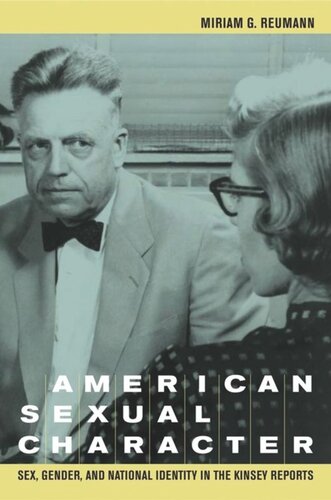

Most ebook files are in PDF format, so you can easily read them using various software such as Foxit Reader or directly on the Google Chrome browser.
Some ebook files are released by publishers in other formats such as .awz, .mobi, .epub, .fb2, etc. You may need to install specific software to read these formats on mobile/PC, such as Calibre.
Please read the tutorial at this link: https://ebookbell.com/faq
We offer FREE conversion to the popular formats you request; however, this may take some time. Therefore, right after payment, please email us, and we will try to provide the service as quickly as possible.
For some exceptional file formats or broken links (if any), please refrain from opening any disputes. Instead, email us first, and we will try to assist within a maximum of 6 hours.
EbookBell Team

0.0
0 reviewsWhen Alfred Kinsey's massive studies Sexual Behavior in the Human Male and Sexual Behavior in the Human Female appeared in 1948 and 1953, their detailed data spurred an unprecedented public discussion of the nation's sexual practices and ideologies. As they debated what behaviors were normal or average, abnormal or deviant, Cold War Americans also celebrated and scrutinized the state of their nation, relating apparent changes in sexuality to shifts in its political structure, economy, and people. American Sexual Character employs the studies and the myriad responses they evoked to examine national debates about sexuality, gender, and Americanness after World War II. Focusing on the mutual construction of postwar ideas about national identity and sexual life, this wide-ranging, shrewd, and lively analysis explores the many uses to which these sex surveys were put at a time of extreme anxiety about sexual behavior and its effects on the nation.
Looking at real and perceived changes in masculinity, female sexuality, marriage, and homosexuality, Miriam G. Reumann develops the notion of "American sexual character," sexual patterns and attitudes that were understood to be uniquely American and to reflect contemporary transformations in politics, social life, gender roles, and culture. She considers how apparent shifts in sexual behavior shaped the nation's workplaces, homes, and families, and how these might be linked to racial and class differences.